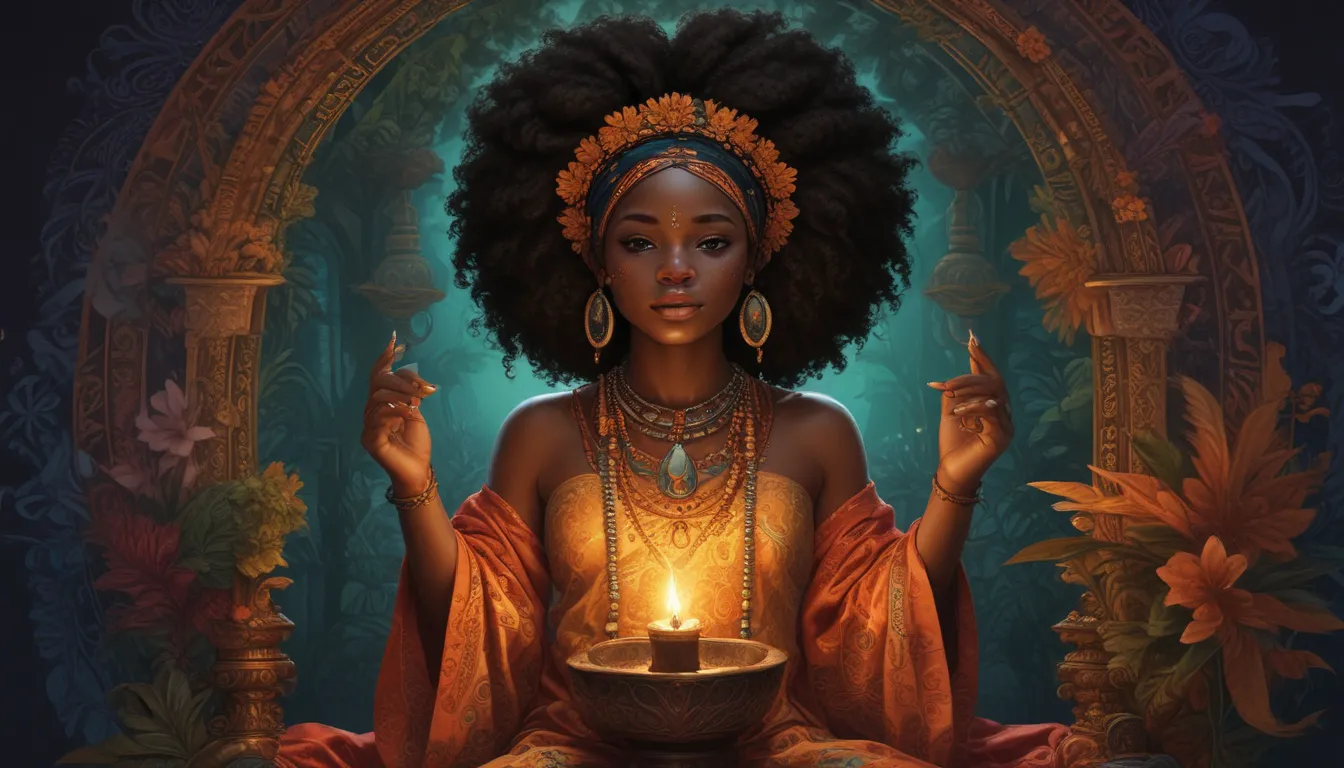The images in our articles may not match the content exactly. They are used to grab your attention, not to show the exact details in the text. The images complement the text but do not replace it.
Welcome to the captivating world of Candomble, an Afro-Brazilian religion steeped in rich traditions, vibrant rituals, and deep-rooted beliefs. Originating in Brazil, Candomble traces its origins back to the enslaved African people who brought their spiritual practices to the shores of the New World during the colonial era. This unique religious practice combines elements of African animism with Catholicism, creating a syncretic blend that promotes inclusivity and tolerance while facing discrimination throughout its history.
Exploring the Origins of Candomble
Candomble is a vibrant and syncretic religion that combines elements of African spiritual traditions with Catholicism, resulting in a rich tapestry of beliefs and practices. Its roots can be traced back to West African religions such as Yoruba, Fon, and Bantu, which were brought to Brazil by enslaved Africans during the transatlantic slave trade. The name “Candomble” itself is derived from the Bantu word “kandombele,” meaning a gathering for religious ceremonies accompanied by music and dance.
Unveiling the Deities of Candomble
Central to Candomble worship are the orixas, gods and goddesses representing natural forces and human qualities. Each orixa, such as Oxum, the goddess of love and fertility, and Xango, the god of thunder and justice, embodies specific attributes and characteristics that guide and protect their devotees.
Delving into Candomble Ceremonies
Candomble ceremonies are vibrant and celebratory events that involve drumming, singing, and dancing. Music plays a vital role in ritual practices, creating a powerful and energetic atmosphere where devotees can connect with the divine and seek spiritual growth and healing. Initiates, known as “filhos de santo” or “children of the saint,” undergo rituals and ceremonies that deepen their connection to the orixas and the religious community.
Embracing Diversity and Inclusivity
One of the core tenets of Candomble is inclusivity and tolerance, welcoming individuals from diverse backgrounds and walks of life into its community. Despite facing persecution and discrimination throughout its history, Candomble has stood as a beacon of diversity, promoting acceptance and understanding among its practitioners.
A Harmonious Blend of Traditions
Candomble incorporates elements of Catholicism into its religious practices, allowing it to coexist alongside mainstream society. This blending of traditions showcases the adaptive nature of Candomble, creating a unique spiritual path that honors both its African roots and the influence of European and indigenous cultures.
Seeking Guidance Through Divination
Divination is an integral part of Candomble, with practitioners seeking guidance and insight through methods such as the throwing of shells or the interpretation of cowrie shells. These practices aim to provide clarity and direction in navigating life’s challenges and decisions.
Celebrating Spiritual Growth and Healing
Through its rituals and practices, Candomble promotes healing, personal transformation, and a deeper connection with the divine. The rhythmic drumming, vibrant singing, and energetic dancing in Candomble ceremonies create a lively and celebratory atmosphere that fosters spiritual growth and empowerment.
Preserving African Cultural Heritage
As a dynamic and living spiritual tradition, Candomble serves as a vessel for the preservation and celebration of African cultural heritage in Brazil and beyond. Its rituals, music, dance, and oral traditions provide a powerful means of expression and connection to the spiritual realm, enriching the lives of its practitioners.
Conclusion
In conclusion, Candomble offers a profound connection to the spiritual world and a sense of community to its practitioners. Through its vibrant rituals, intricate cosmology, and worship of the orixas, Candomble provides a space for healing, empowerment, and spiritual growth. Celebrating diversity and inclusivity, Candomble stands as a beacon of tolerance and acceptance in a world of discrimination and oppression.
FAQs
-
What is the significance of the Orixas in Candomble?
The Orixas are divine entities worshipped in Candomble, representing different aspects of nature and human experiences, providing spiritual guidance and protection. -
Is Candomble practiced outside of Brazil?
Yes, Candomble has spread to other parts of the world, with communities and practitioners in countries such as Argentina, Uruguay, and the United States. -
Are there any rituals or ceremonies in Candomble?
Rituals and ceremonies are integral to Candomble, involving music, dance, prayers, and offerings to the Orixas to establish a connection between the human and divine realms. -
Can anyone practice Candomble?
Candomble is open to anyone genuinely interested and respectful of its practices and beliefs, welcoming people from diverse backgrounds and walks of life. -
How does Candomble view the concept of divinity?
In Candomble, divinity is seen as a complex and interconnected web of spiritual forces, with the Orixas serving as manifestations of the divine. -
Does Candomble have any ethical guidelines or principles?
Candomble emphasizes respect, compassion, and harmony with nature and others, promoting community, social responsibility, and the interconnectedness of all living beings. -
How can one learn more about Candomble?
To learn more about Candomble, engage in respectful conversations with practitioners, attend workshops or events, and immerse yourself in the traditions and rituals of this vibrant religion.
Dive into the enchanting world of Candomble, where spirituality, tradition, and cultural heritage intertwine to create a vibrant tapestry of beliefs and practices. Embrace diversity, celebrate inclusivity, and embark on a journey of spiritual growth and healing that transcends time and space in the mesmerizing realm of Candomble.






